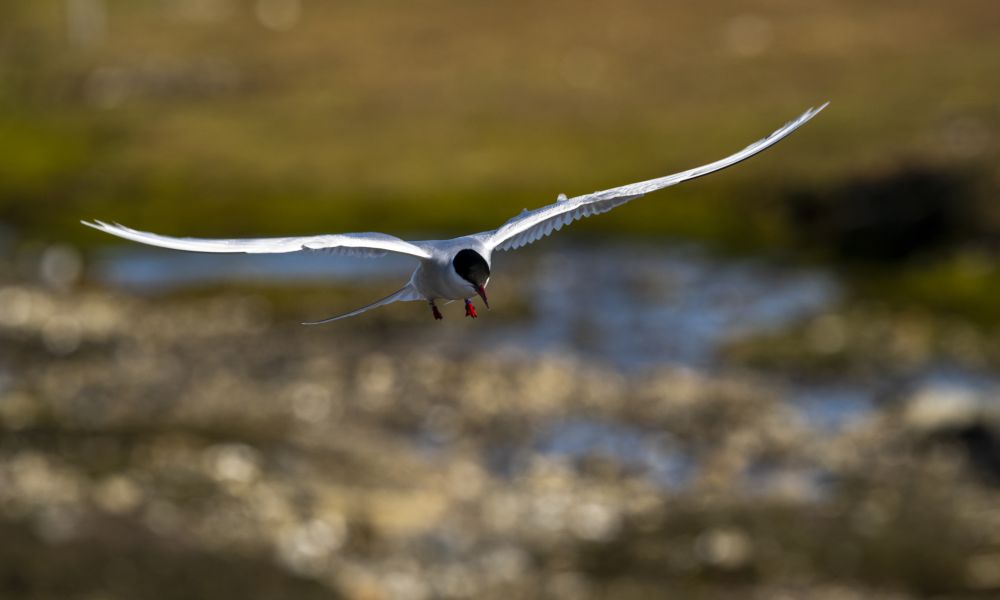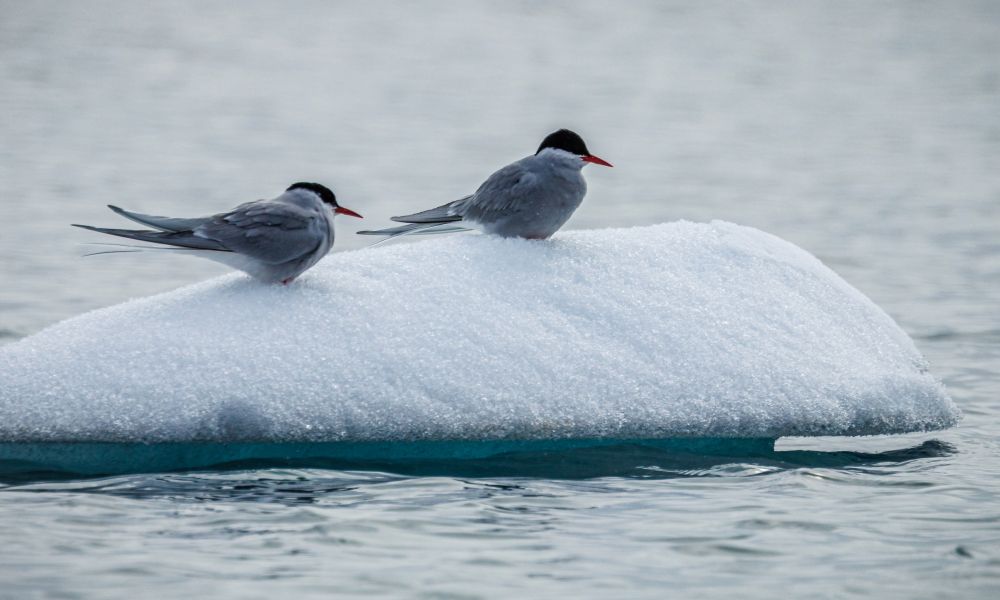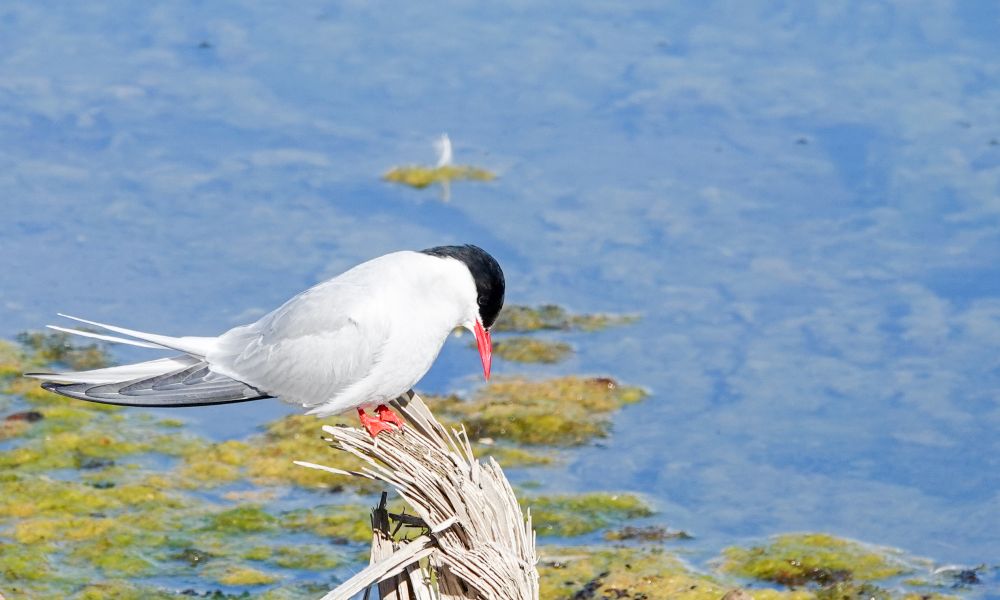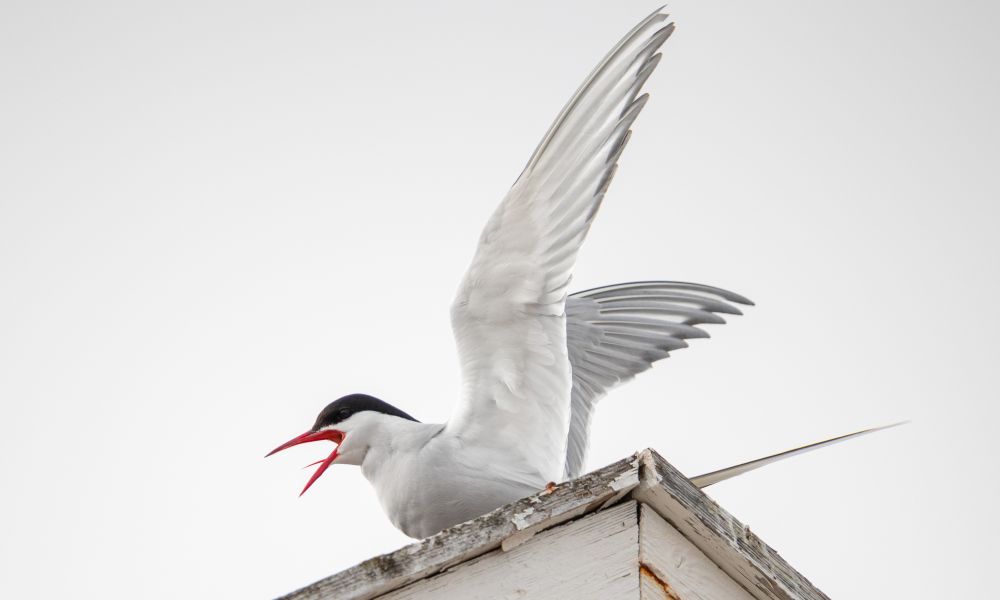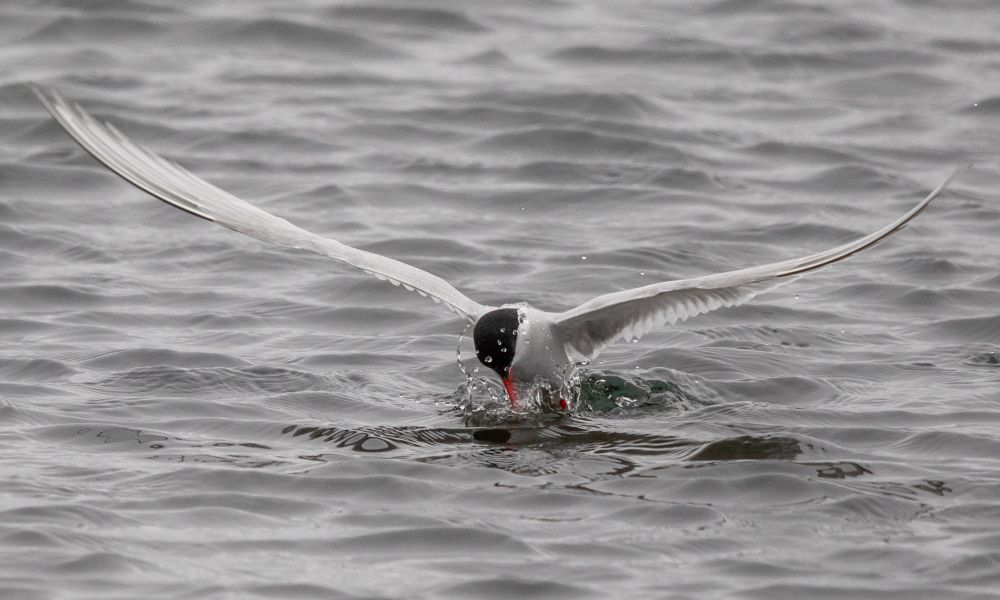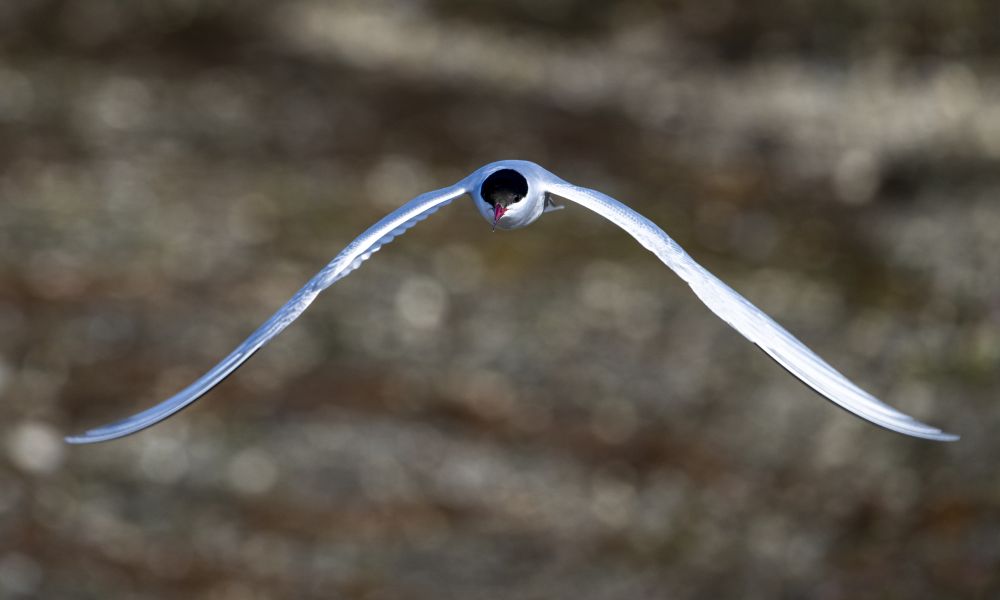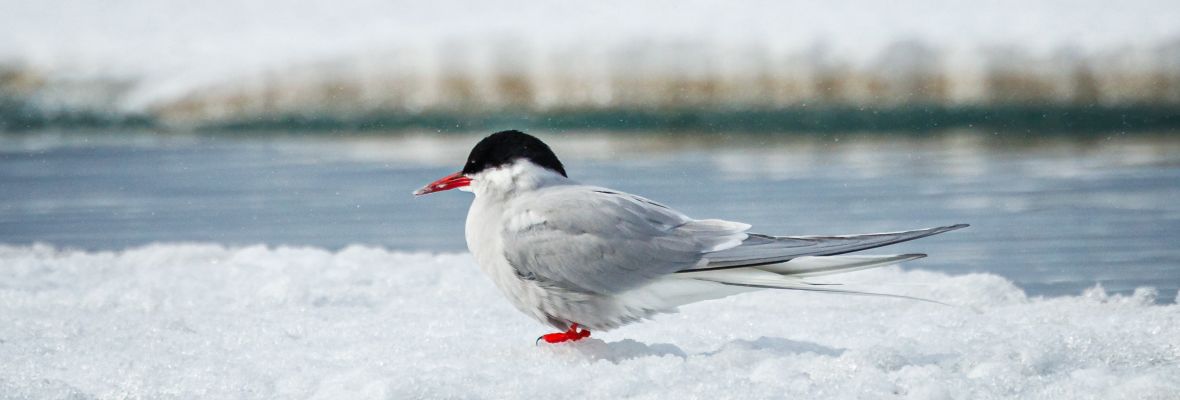Artic Tern
The Arctic Tern is a bird that can be spotted from the Arctic to Antarctica. It is known for undertaking the longest migration of any animal on Earth.
Facts about Artic Tern
- Antarctica
- Antarctic Peninsula
- Falkland Islands
- South Georgia
- Arctic
- Canada
- Greenland
- Iceland
- Jan Mayen
- Svalbard
- South America
- Argentina
- Europe
- Denmark
- England
- France
- Portugal
- Norway
- Scotland
- Spain
Scientific Name: Sterna paradisaea
Population: Estimated at close to 2 million globally
Regions: Arctic, sub-Arctic, and Antarctica
Destinations: Falkland Islands, South Shetland Islands, Antarctic Peninsula, South Georgia, Jan Mayen, Iceland, Canada, Svalbard, Greenland, Denmark, France, Norway, Spain, Portugal, England, Scotland, Argentina
Average Length: Adult: ~35 cm (13.8 in); Newborn: ~5 cm (2 in)
Average Weight: Adult: ~100–125 g (3.5–4.4 oz); Newborn: ~15–20 g (0.5–0.7 oz)
Diet Habits: Primarily small fish (Arctic cod) and pelagic crustaceans (krill); also feeds on insects during summer
Kingdom: Animalia
Phylum: Chordata
Class: Aves
Order: Charadriiformes
Family: Laridae
Genus: Sterna
Species: S. paradisaea
English: Arctic Tern
Danish: Havterne
Chinese: 北极燕鸥
Swedish: Silvertärna
Finnish: Lapintiira
Norwegian: Rødnebbterne
Polish: Rybitwa popielata
Japanese: キョクアジサシ
Spanish: Charrán ártico
French: Sterne arctique
Questions Guests Ask About the Arctic Tern
What Do They Look Like?
The Arctic tern is a small tern species with both male and female looking alike. Some of their main characteristics are having a sharp red bill, red legs, a light grey back, a whitish belly, and a black cap. The tail is deeply forked, and the projecting outer tail feathers extend well beyond the wingtips when the bird is perched with its wings folded. The legs are short and orange-red. Moreover, adults range from approximately 35 cm in length to 100-125g in weight.
Where Does the Arctic Tern Live?
Since they have a circumpolar distribution, Arctic tern habitat ranges from where they breed (Arctic and sub-Arctic) to where they spend winter (Antarctica). Moreover, due to their nesting and breeding behaviours, they prefer coastal areas and flat islands with little vegetation.
Where Does the Arctic Tern Migrate To?
Surprisingly far from one another, their migration can range from the Arctic to Antarctica. When breeding, it is commonly seen on islands and coastal mainland areas of the High Arctic, as well as the North Pacific and North Atlantic south to 50 °N. In the eastern Atlantic, it breeds in Greenland and Iceland, the British Isles, the Baltic Sea, Norway (including Svalbard) and the Barents Sea region. When spotted on the coasts of Svalbard, it is mostly found on the western and northern parts of Spitsbergen. To take advantage of the summer from both hemispheres, the Arctic tern bird appears during these months in Antarctica. When summer sunlight decreases in the Southern Hemisphere, Athey continue with its migration route and returns to Svalbard in late May or early June and departs again between late August and mid-September.
Why Do They Migrate?
The Arctic tern's migration path is explained by the fact that these birds follow the sun, experiencing two summers each year, one in the Arctic and one in Antarctica. They migrate to maximize feeding opportunities and reduce exposure to harsh winters. They are considered to have the longest migration route among all birds and animals, covering distances that can reach from 60 to 80,000 km (about 50,000 miles) annually between breeding and wintering areas.
What Do Arctic Terns Eat?
Arctic tern diet primarily includes small pelagic crustaceans, like krill, and small fish, such as arctic cod. In summer, their diet may also include insects.
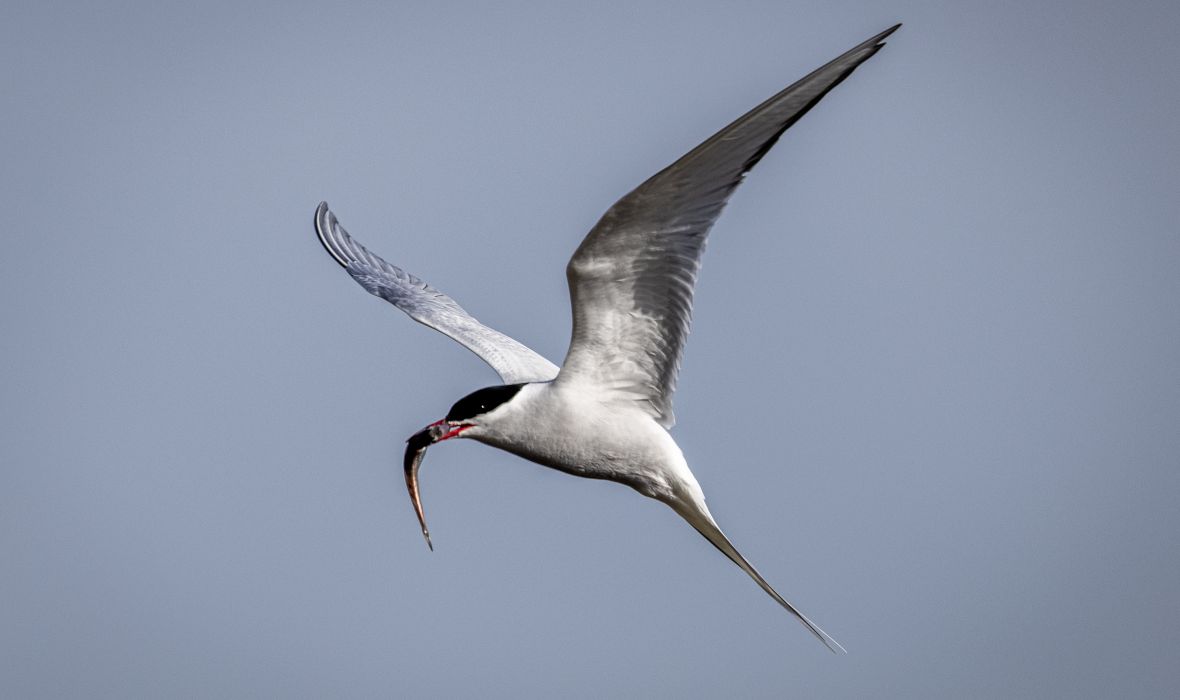
How Many of These 10 Arctic Tern Facts Did You Already Know?
Fact #1: Their lifespan is approximately 30 years.
Fact #2: The Arctic tern's longest migration ever recorded was 96,000 km (59,650 miles).
Fact #3: They usually lay 2-3 eggs, incubated by both mates.
Fact #4: According to the IUCN Red List, they are classified as ‘Near Threatened’.
Fact #5: Their main predators are gulls, cats and other small mammals.
Fact #6: The sounds they make are a variety of harsh and shrill calls.
Fact #7: Arctic tern wingspan size ranges between 64-76 cm (25-30 in).
Fact #8: The Arctic Tern is the northernmost of all the terns.
Fact #9: The species is monotypic, exhibiting little geographical variation.
Fact #10: Arctic tern adaptations include an aerodynamic body, long wings, and a lightweight frame.
Join on an Arctic adventure with Albatros Expeditions and witness the wonders of Arctic wildlife!
